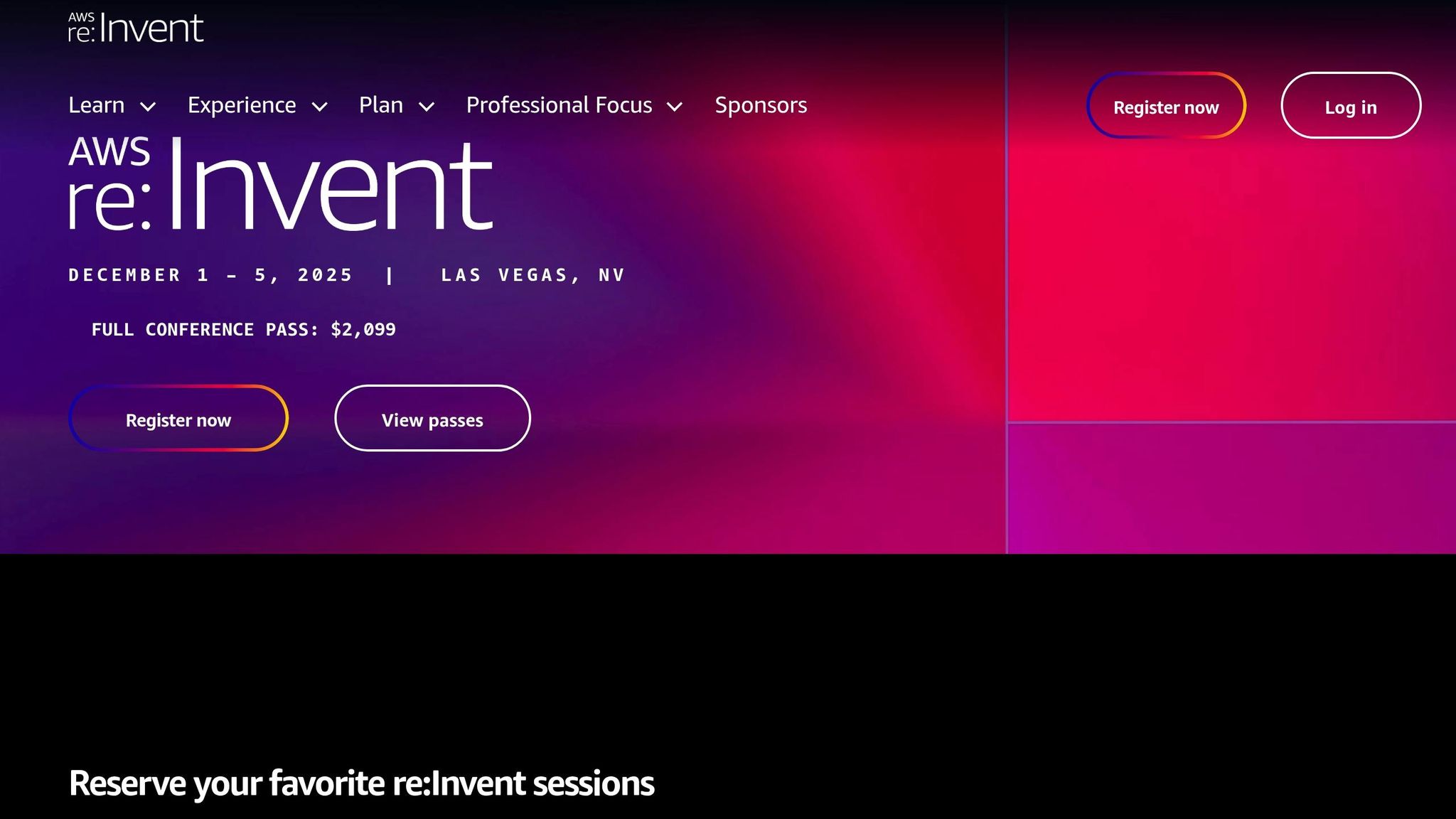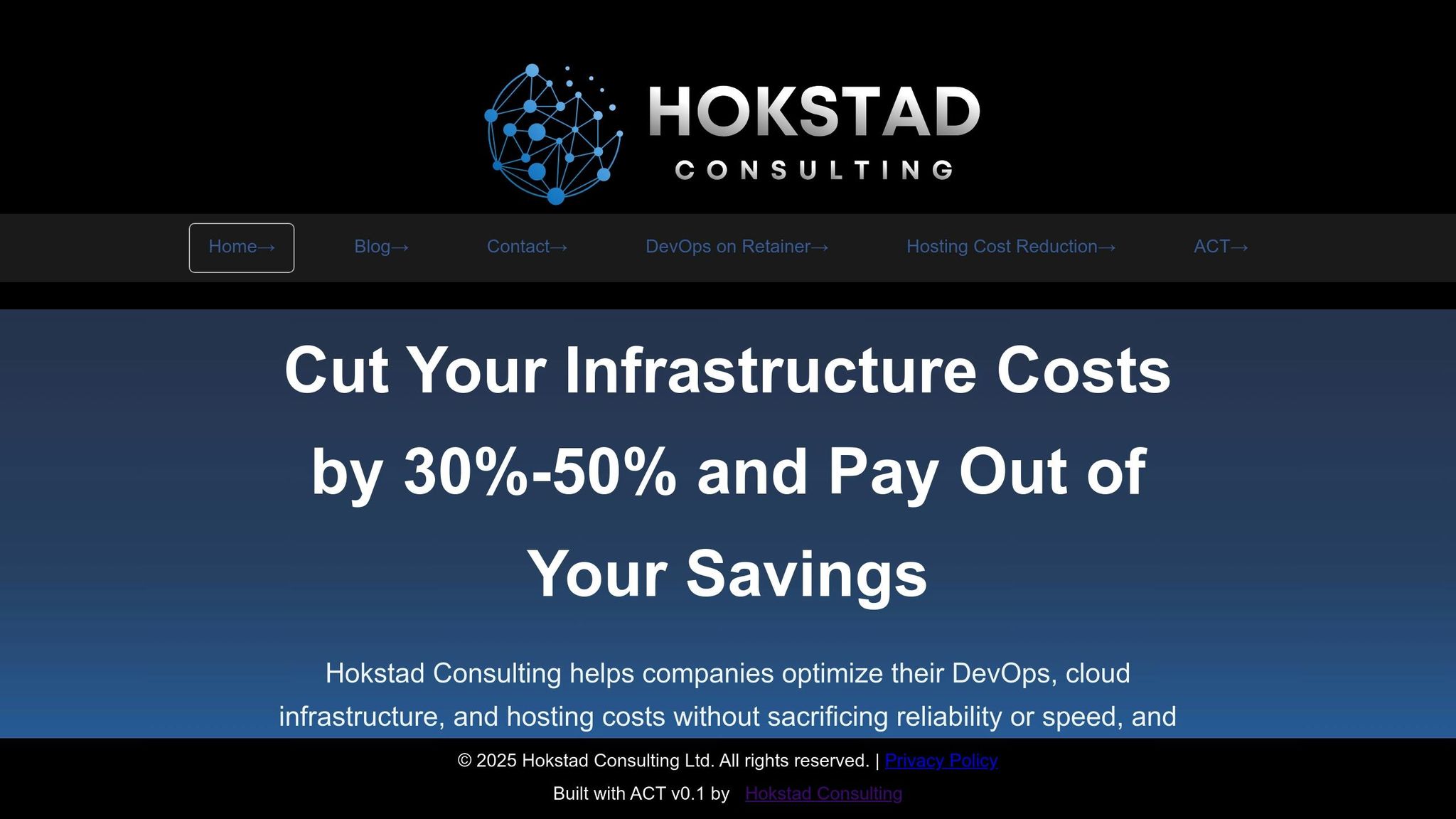Dynamic cloud security policies are transforming how businesses manage threats and costs. Unlike static frameworks, which rely on fixed rules and manual updates, dynamic policies adjust in real time using automation. This approach improves threat response, reduces human errors, and slashes administrative costs by 30–50%.
For UK businesses, dynamic policies are especially useful in handling fluctuating workloads and evolving compliance needs. They enable automatic scaling, real-time threat mitigation, and smarter resource management. Tools like policy-as-code and predictive scaling further streamline operations, helping organisations save on cloud expenses while maintaining robust security.
Key Takeaways:
- Static policies are predictable but struggle with flexibility in changing environments.
- Dynamic policies use automation to improve efficiency and cut costs.
- Businesses save up to 30% on cloud waste and 60–66% on resource scheduling.
- Hokstad Consulting helps UK firms transition to dynamic frameworks, ensuring compliance with local regulations like GDPR.
Dynamic policies are the future of cloud security, offering a balance of protection and cost savings tailored to modern business needs.
AWS re:Invent 2024 - Dynamic security at scale: Cedar policies for continuous authorization (SEC207)

1. Static Policy Frameworks
Static policy frameworks form the backbone of traditional cloud security. They rely on fixed rules that require manual updates, operating on a 'set it and forget it' basis. Once controls are established, they are only reviewed periodically rather than adjusted in real time.
Take reserved instances and savings plans as examples of static frameworks in action. These cost-saving models can cut compute expenses by 30-70% compared to on-demand pricing, but they work best when workloads are consistent and predictable[6]. For instance, a financial services firm might set up fixed firewall rules and access controls for its cloud-based customer data platform, reviewing these quarterly and updating them only through formal change management processes[4].
Static frameworks shine in environments where workloads are stable and well-defined, and operational needs rarely change. They offer clear governance, which is particularly appealing to organisations with strict regulatory requirements. Their unchanging policies make compliance audits straightforward. Small and medium-sized enterprises often prefer this approach because it’s simpler and less complex to implement compared to dynamic alternatives.
However, static policies can create challenges in rapidly changing cloud environments. When usage patterns shift unexpectedly, organisations may end up paying for unused capacity or missing out on potential savings due to undercommitment[6]. The manual nature of updates is a significant drawback - 60% of cloud breaches have been linked to outdated or misconfigured static policies, underlining the risks of slow responses to new threats[4].
The same rigidity that makes static frameworks effective for compliance can become a major obstacle in dynamic cloud operations. Developers may find themselves spending too much time configuring infrastructure instead of focusing on building features that add business value. Manual processes also lead to slower deployment cycles and higher error rates. This lack of flexibility often results in either over-provisioning resources, which drives up costs, or under-protecting systems, which increases security vulnerabilities. Static policies struggle to keep up with sudden traffic spikes or rapidly changing business needs.
| Characteristic | Static Policy Impact | Business Implication |
|---|---|---|
| Scalability | Manual updates needed for infrastructure changes | Delayed deployments and inefficient scaling |
| Compliance Management | Consistent enforcement with periodic audits | Clear audit trails but potential gaps between reviews |
| Cost Efficiency | High savings for stable workloads (30-70%) | Risk of paying for unused resources during changes |
| Threat Response | Fixed controls, manual updates only | Slower reactions to emerging security threats |
Static policy frameworks are a solid choice for workloads with predictable demands and for organisations prioritising regulatory compliance over agility. However, their limitations become evident when businesses need to scale quickly, react to market shifts, or address evolving security challenges without lengthy approval processes. These constraints highlight the growing need for dynamic models that can adapt to the ever-changing demands of modern cloud environments.
2. Dynamic Policy Frameworks
Dynamic policy frameworks mark a departure from the inflexible, manual processes of static systems. These frameworks adjust security rules in real time, responding to shifts in conditions or emerging threats [1]. Gone are the days of waiting for quarterly reviews or manual updates - dynamic policies use conditional logic and environment variables to adapt instantly. This approach not only reduces human error but also speeds up threat response, creating a balance between cost efficiency and robust security for UK cloud operations.
The real strength of dynamic frameworks lies in their ability to adapt. By integrating with observability tools, they allow for continuous monitoring and rapid action without needing manual intervention [4]. For example, when a threat is detected, the system can automatically adjust access controls, update firewall rules, or reallocate resources based on predefined conditions. This automation extends beyond security measures - dynamic policies can also scale resources up during periods of high demand and scale them down when demand drops, ensuring optimal performance and cost efficiency.
One of the key components of these frameworks is autoscaling and dynamic scaling policies. These are especially beneficial for UK businesses dealing with fluctuating demand. Paying for unused capacity during off-peak hours can dent budgets, but dynamic scaling solves this by adjusting resources as needed. A case in point: dynamic firewall rule adjustments have been shown to speed up threat remediation by as much as 30% [6].
The policy-as-code model takes this a step further, allowing organisations to define, test, and deploy policies programmatically across multi-cloud environments [7]. This is particularly useful when businesses expand into new markets or face regulatory changes. With dynamic frameworks, compliance controls can update automatically, eliminating the need for lengthy approval processes.
Another practical example is resource scheduling. Non-production environments, such as development, testing, and staging systems, can be programmed to shut down outside business hours. This simple automation can save 60–66% on cloud expenses [5]. For a UK company operating on standard 9-to-5 hours, these savings can add up significantly, especially when applied across multiple teams and projects.
Dynamic frameworks also tackle the issue of orphaned resources - those forgotten instances, unused storage, or abandoned databases that quietly rack up costs. Automated tagging and enforcement policies can reduce cloud waste by up to 30% [7], helping organisations better allocate budgets and improve cost accountability across departments. On top of that, modern frameworks incorporate predictive scaling, which uses historical data and machine learning to anticipate demand, ensuring resources are available when needed without overspending.
| Performance Criteria | Dynamic Framework Capability | Business Impact |
|---|---|---|
| Scalability | Automatic resource adjustments based on demand | 40–60% cost savings for variable workloads |
| Threat Response | Real-time updates using conditional logic | 30% faster threat mitigation compared to manual processes |
| Cost Efficiency | Predictive scaling and automated management | Up to 30% reduction in cloud waste |
| Compliance | Continuous monitoring and enforcement | Lower audit costs and faster regulatory compliance |
While the benefits are clear, implementing dynamic frameworks requires expertise. Setting up environment variables, conditional logic, and automation workflows demands a skilled team familiar with both security protocols and cloud architecture [1]. Challenges can also arise during integration, particularly in legacy systems or complex multi-cloud setups where platforms may have differing capabilities and interfaces [3].
As cloud environments grow in scale and complexity, the advantages of dynamic frameworks become even more evident. Their ability to automatically adapt to changing circumstances, cut costs in real time, and maintain strong security without constant oversight makes them indispensable for modern cloud operations. For UK businesses navigating shifting regulations and competitive markets, these frameworks offer a flexible solution to stay ahead while keeping budgets in check.
Need help optimizing your cloud costs?
Get expert advice on how to reduce your cloud expenses without sacrificing performance.
3. Hokstad Consulting's Dynamic Policy Solutions

Hokstad Consulting takes the proven efficiency of dynamic frameworks and elevates it with tailored, cost-conscious solutions. Their proactive approach focuses on continuous monitoring, automated policy adjustments, and seamless integration with DevOps workflows. Instead of waiting for threats to surface, their solutions adapt instantly to evolving threat landscapes and operational demands, ensuring security policies remain effective and economical as cloud environments grow and change [1][3].
The firm excels in customising solutions for varied infrastructure types. In hybrid environments, they dynamically adjust access controls and monitoring based on workload location and sensitivity. For managed hosting setups, their focus shifts to automating compliance checks and incident response, cutting down on manual tasks and operational costs. This ability to tailor solutions ensures that each client’s unique infrastructure needs are met [4].
A real-life example highlights their success. When working with a UK-based fintech company, Hokstad Consulting implemented dynamic access controls and automated secrets management. The results were impressive: manual policy updates dropped by 70%, incident response times shrank from hours to minutes, and the client saved an estimated £120,000 annually by reducing reliance on dedicated security staff and minimising downtime. This case demonstrates the effectiveness of moving from static security measures to agile, real-time cloud protection.
Automation and AI integration set Hokstad Consulting apart from traditional methods. Their systems automate policy enforcement, compliance checks, and anomaly detection, enabling real-time adjustments. This approach not only reduces downtime but also lowers operational costs. By adapting instantly to new threats and operational changes, they minimise the risks of breaches and the need for manual oversight [2].
Transitioning from static to dynamic frameworks can be challenging, but Hokstad Consulting tackles these hurdles directly. They address issues like legacy system integration, staff training, and resistance to change with tailored migration plans and phased implementations. This ensures a smooth switch to dynamic, automated policy management while maintaining uninterrupted operations [1][3].
Compliance is a cornerstone of their solutions, especially for UK organisations navigating GDPR, ISO 27001, and other regulatory standards. Their dynamic frameworks include automated compliance checks, audit trails, and policy templates aligned with these regulations. Regular reviews and automated reporting make it easier for clients to stay compliant and quickly adjust to regulatory updates [2][4].
For UK clients, Hokstad Consulting ensures all solutions are localised. Cost reporting is in GBP (£), date formats follow UK standards (DD/MM/YYYY), and British English conventions are used throughout. Compliance modules are specifically tailored to UK regulations, ensuring that documentation and interfaces match local requirements and expectations.
The firm measures success through clear metrics: faster incident response times, fewer manual interventions, improved policy compliance rates, cost savings, and reduced security incidents. These metrics are tracked via dashboards and regular reports, giving clients tangible proof of enhanced security and operational efficiency. This data-driven focus ensures their solutions provide real, measurable value.
For UK organisations looking to adopt dynamic policy management, Hokstad Consulting recommends starting with a thorough risk assessment, automating high-impact policies, and integrating dynamic frameworks into existing DevOps pipelines. They stress the importance of regular staff training, frequent policy reviews, and leveraging AI for ongoing improvements. These steps not only strengthen security but also deliver the kind of cost savings demonstrated in their client success stories [2][3].
Advantages and Disadvantages
When it comes to choosing between static and dynamic policy frameworks, understanding the trade-offs is essential. Each approach impacts operational costs, security, and scalability in unique ways. Let’s break down how these frameworks compare in practice.
Static policy frameworks are known for their predictability and simplicity, making them a solid choice for organisations with stable workloads and strict compliance needs. These frameworks rely on consistent, well-defined rules that are straightforward to audit and understand. However, the downside is that static policies often require organisations to over-provision resources to handle peak loads. This means paying for unused capacity during quieter periods, which can lead to inefficiencies. Additionally, without automated scaling, businesses may face performance challenges during unexpected traffic surges.
On the other hand, dynamic policy frameworks tackle these issues with automated adaptation and real-time responsiveness. They shine when it comes to scalability, automatically adjusting resources to meet changing demands and addressing evolving threats without manual input. This adaptability not only ensures performance stays consistent but also helps organisations save on costs by optimising resource usage.
That said, dynamic frameworks come with their own challenges. Setting them up demands a significant investment in both technology and staff training. There's also a risk of unintended rule changes if automation isn’t carefully managed, and ensuring regulatory compliance can be more complicated due to the constant adjustments these policies make [1][2].
To bridge these gaps, some solutions offer tailored advantages. For example, Hokstad Consulting's dynamic policy solutions combine the flexibility of dynamic frameworks with expertise in cost engineering and UK-specific compliance. Their approach integrates AI-driven automation with compliance modules designed for UK regulations, addressing many of the typical challenges through careful planning and ongoing optimisation. Case studies have shown that such dynamic solutions can significantly reduce both incident response times and operational costs [4][1].
When weighing up costs, the differences between these frameworks become clear. While static policies may seem cheaper at first glance, hidden costs often arise from manual interventions and over-provisioning. Dynamic policies, by contrast, offer better cost efficiency through automation and resource optimisation, but they require diligent monitoring and expert oversight to avoid potential missteps that could impact security.
In summary, static frameworks work well for organisations with stable regulatory environments and predictable workloads, while dynamic frameworks are better suited to businesses navigating rapidly changing conditions or aiming for cost efficiency. Dynamic policies, however, demand robust audit trails and compliance tools tailored to meet UK standards.
Ultimately, the best choice depends on an organisation’s priorities, technical capabilities, and appetite for risk. Static policies are ideal for those with minimal change and steady operations, while dynamic frameworks are a better fit for organisations seeking flexibility and cost savings - especially when implemented with expert guidance. These considerations help organisations align their cloud security strategies with their financial and operational goals.
Conclusion
Dynamic policy frameworks offer a smarter way to enhance cloud security while cutting costs, thanks to their ability to adjust in real time. While static policies might seem straightforward, they often lead to over-provisioning, inefficient resource use, and unnecessary expenses. This shift towards dynamic frameworks lays the groundwork for the financial and operational advantages discussed here.
For organisations with fluctuating workloads, dynamic policies provide notable cost savings while also improving response times to security threats. This agility is especially critical for UK businesses in regulated industries, where compliance failures can lead to hefty fines and reputational risks.
Hokstad Consulting specialises in crafting dynamic policy solutions tailored to the unique challenges faced by UK organisations. Their expertise in cloud cost engineering and DevOps ensures that these solutions are not only technically sound but also aligned with local regulations and business practices. By leveraging AI-driven automation alongside a deep understanding of compliance, they help businesses strike the right balance - avoiding the risks of over-automation while maximising both cost efficiency and security.
But this shift isn’t just about technology. Transitioning from static to dynamic policies represents a fundamental change in how organisations approach cloud security. Instead of seeing security as a static expense, dynamic frameworks enable businesses to view it as a flexible, value-adding function - one that supports a modern and agile approach to cloud operations.
For organisations looking to break free from the constraints of static policies, dynamic frameworks provide a clear path to more secure, cost-efficient cloud operations that can grow with business demands and redefine security practices for the better.
FAQs
How can dynamic cloud security policies help lower costs compared to static approaches?
Dynamic cloud security policies offer a smart way to cut costs by adjusting to real-time conditions. They ensure resources are used efficiently, avoiding unnecessary expenses. Unlike static frameworks that remain fixed, these policies automatically adapt to fluctuating workloads and emerging threats, reducing the need for manual adjustments and preventing expensive overprovisioning.
With automation and real-time data at their core, these policies enable businesses to save significantly while keeping security strong. For example, optimising cloud infrastructure with dynamic policies can lead to cost reductions of 30–50%, all while improving system performance and bolstering security.
What obstacles can arise when introducing dynamic policy frameworks to existing cloud environments?
Implementing dynamic policy frameworks in existing cloud setups isn't without its hurdles. One major challenge lies in integrating these frameworks with legacy systems, which often weren’t built to accommodate adaptable policies. This might mean extensive reconfiguration or, in some cases, replacing outdated infrastructure entirely.
Another obstacle is ensuring the new policies meet an organisation's compliance and security standards. Dynamic policies require regular monitoring and adjustments to prevent security gaps or inefficiencies in operations. On top of that, there’s often resistance from teams unfamiliar with these frameworks, making training and effective change management essential.
Even with these challenges, the benefits - like improved cost efficiency and stronger, more flexible cloud security - make the effort worthwhile for many organisations.
How does Hokstad Consulting adapt dynamic policies to align with UK regulations?
Hokstad Consulting specialises in crafting policy solutions that align perfectly with the UK's regulatory landscape. By keeping a close eye on local compliance standards and guidelines, they develop policies designed to strengthen cloud security while ensuring full adherence to UK laws.
Their process involves understanding your organisation's unique needs, implementing bespoke solutions, and staying vigilant for any regulatory updates. This way, your cloud infrastructure stays not only secure and efficient but also fully compliant with the specific requirements of the UK.
